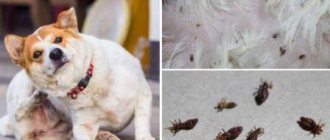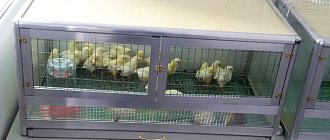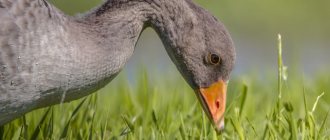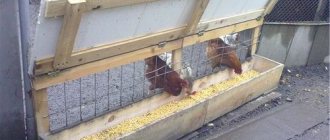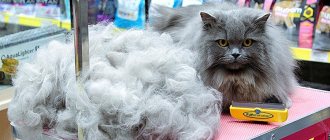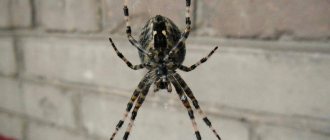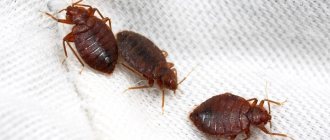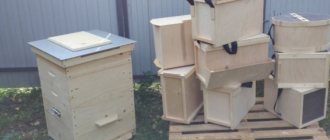What is makukha
Most often, makukha is called cake, and rightly so. Makha is waste from seeds of various crops after they have been processed under pressure. Makuha happens:
In poultry farming, sunflower meal is used as a feed additive - it is the cheapest. The easiest way to get sunflower cake is in butter churns where sunflower oil is made.
Sunflower flour is a valuable source of vitamins and microelements. It contains crude fiber, up to 30% protein and about 7% oil, which remains after pressing. In addition, sunflower cake is rich in proteins, which are many times superior in quality to cereal grains.
Including macadamia in the diet of chickens allows you to provide them with a balanced diet. As a result: egg production increases, chickens gain weight faster, and the incidence of disease decreases.
Composition of sunflower cake
Sunflower cake is quite nutritious; its composition includes 30-40% protein. It also contains water, the amount of which should not exceed 11%, fiber - 5%, oil - up to 9.4%. When grinding seeds, the shells are eliminated on their own, which is why there is such a small amount of fiber.
Sunflower oil, which remains in large quantities in the cake, is rich in polyunsaturated fatty acids, vitamin E and phospholipids. The oil also has a low oxidation state, so the product is quite nutritious.
How to feed chickens maca
The bird will eat the food completely if the maca is pre-steamed. You just need to pour the cake into a bucket, add hot water and let it sit under the lid. It will swell and increase in volume. In this form there will be almost no waste. If you sprinkle dry dust, they will rake more than they eat.
It is recommended to include maca in the diet of birds no more than 2 times a week, especially for laying hens. It contains quite a lot of oils, and feeding it too often will make the chickens fat. They will begin to produce fewer eggs, and most of them will be unsuitable for hatching due to infertility.
You can also stir steamed corn flour with various additives, for example, chopped grass. Chickens also eat well a nutritious grain mixture with the addition of corn flour, consisting of the following components:
- wheat (12 kg);
- barley (3 kg);
- corn (3 kg);
- oats (2 kg);
- peas 1.5 kg;
- fishmeal (2.5 kg);
- fuse (600 ml);
- coarse shale sand (1 kg);
- premix (0.5 packs of “Ryabushki”);
- makukha (3.5 kg).
The output is 30 kg of grain mixture. The cake content in it is 13-15% of the total mass. You can give this food to chickens in the morning and evening.
Using macadamia as an additive to chicken feed - video
Every poultry farmer, both beginner and experienced, should know how to properly and what to feed chickens in order to obtain high egg production rates and obtain soft and juicy meat. Unbalanced nutrition or its lack causes a deficiency of vitamins and minerals in chickens, which leads to diseases of individuals, their exhaustion and a drop in egg production. No matter what purpose a farmer breeds birds for: meat or eggs, the health and productivity of the animal should always be in the foreground.
How to breed mealworms for chickens at home
Tips for beginners on how to provide chickens with healthy treats
Raising mealworms is a simple process that provides your pets with tasty, high-protein food.
Another advantage is that you will need very little space for this activity. You will need to have:
plastic cabinet with 3 drawers, which can be bought in a store
fine mesh wire mesh
stapler
scotch
cereals
potatoes and carrots
large mealworm as starter stock. The larval form of this beetle is the notorious mealworms.
Note that mealworms are not the same red worms that you use for your compost, so you can breed them right in your living room and it is unlikely that anyone will pay attention to the small and neat cabinet with the original contents, since these insects do not smell. So, buy a plastic cabinet with three drawers from the store
So, buy a plastic cabinet with three drawers from the store.
Then cut the bottom out of the first two drawers.
Once you have cut out the bottoms, place the mesh in the open space. Use a stapler to secure the wire mesh.
Thus, when the mealworms turn into beetles, they will begin to lay eggs in these boxes. The eggs will fall through the wire mesh and accumulate in the lower compartment.
You will swap the two drawers to achieve optimal use of the mini worm farm. Because when you buy worms, you will place them at the bottom of the cabinet. Then, as the larvae begin to develop into beetles (which only takes a few weeks), you will lift the boxes up so that the eggs fall down accordingly. After the beetles die, you can leave them to be eaten by their fellow creatures.
Tape the outside of each box to minimize lighting, as these insects prefer complete darkness. It is unlikely that the beetles will be able to escape - they do not know how to climb walls made of slippery plastic, and the larvae even spend their time buried in the substrate.
Mealworm larvae happily feed on oatmeal (in addition to being food and bedding for them), potatoes and carrots. They won't refuse a piece of apple either. Potatoes and carrots should also be chopped and replaced as they wilt about once a week. The larvae will obtain all the necessary moisture from fresh vegetables, and the spent food will be used again, but for the compost heap.
You can buy mealworms at a pet store or from hobbyist livestock breeders. It’s no secret that because of the simplicity of this method, many people breed Khrushchak animals for sale. There is no need to buy too much at once if you are just starting to experiment.
Caring for insects is simple. About once every 3 months you need to replace the litter. Be sure to use a sieve to avoid throwing out the pupae. Don't throw away the litter either. Mealworm waste makes an excellent organic fertilizer!
Types of feed
There are currently three types of chicken feed:
Wet food includes mash for chickens. It is prepared at home. It may include various types of vegetables, grains, bran, herbal flour, flour, meal, sunflower cake, etc. All these products are used boiled with the addition of water or whey. If the birds are kept in cages, chopped greens must be added to the mash. If they can move freely around the coop, you just need to scatter the grass clippings.
Wet food option for chickens
Dry food includes compound feed. Compound feed for chickens is a feed mixture consisting of various types of nutrients necessary for the nutrition of birds. It is sold in crushed form. The crushed state makes it possible to get enough of only the required amount of product. One bird per day should eat 120 - 130 g of dry feed.
Dry food for chickens
Feed for chickens may include:
- Substances of animal origin;
- Plant products;
- Vitamins;
- Microelements.
Each type of feed mixture contains different amounts of nutrients. The composition of the feed depends on the time of year for which it is intended; the main components are:
As the name implies, combined feeds include both dry and wet foods in equal proportions in the diet. Using combined feed allows you to get the most balanced nutrition for chickens
Chicken feeding diet
In order for chickens to be healthy and have high productivity, it is necessary that their daily diet be balanced with nutrients and vitamins. The main components of the daily diet should be:
- Grain - up to 75% of the daily diet;
- Corn - up to 50% of the daily diet;
- Barley - up to 30% of the daily diet. It is not recommended to feed chickens barley in its pure form. This is due to the structure of the barley grain (sharp tips can harm birds);
- Wheat - 2/3 of the daily diet. Sprouted wheat grain is especially useful; it contains all the necessary vitamins for chickens;
- Oats - no more than 15% of the grain mixture. It allows you to avoid chickens pecking at each other.
- Additionally, you can add to the daily diet: rye, buckwheat porridge, cake, meal - no more than 10% of the daily diet;
With the help of sunflower seeds you can increase the egg production of birds. Legumes and flax have the same properties.
Feeding chickens with vitamin complexes and premixes is also very important.
Premixes are an addition to basic nutrition. They should not be given instead of main food. They contain vitamins and minerals. It should be used in small quantities in the diet.
What does the mash consist of?
Making mash for chickens is not difficult for rural residents. Most of the products that are on hand are used. This is mainly vegetation from the garden.
But the main component of the mash, regardless of the time of year, remains grain. It is the grain crops that give the feed high nutritional value, and the remaining ingredients improve digestion and additionally enrich the bird’s body with vitamins, minerals, amino acids and trace elements.
You can add a mixture of wheat, barley and oats to your chicken mash. In summer, grain crops are sometimes mixed in crushed form. In winter, the grain is given whole or steamed. This will keep the chickens full longer and produce more thermal energy during the cold season.
It is recommended to mix crushed corn into the mixture up to 2-3 times a week in winter. The product has high energy value and contains vitamins necessary for poultry. Giving corn more often is not recommended, as the birds may become fat and stop laying eggs.
The following vegetables and fruits can be added to the mash for laying hens:
These crops contain many vitamins A, B, C, microelements and fiber. It is allowed to add potato and other vegetable peelings to the mixture, which are pre-washed.
What is forbidden to give to chickens
- Large amounts of vegetables - can cause digestive upset in chickens;
- Low quality fish oil - causes an unpleasant odor in eggs;
- Baking - can lead to the death of animals;
- Hard peels of fruits and vegetables are also not recommended because they are difficult for birds to digest;
- Large amounts of salt;
- Styrofoam.
Chickens can only be given bread if they are kept in a chicken coop and have room to roam. It should not be given to birds in cages. If bread is used as an additional complementary food, it must be mixed with what the chickens usually eat - grain, mash. To fatten chickens, it is recommended to use white bread crackers.
Nutritional features of adult chickens
To provide birds with all the necessary nutrients, their feed must contain a number of substances:
| Substance | Norm in %, day |
| Squirrels | 15 — 18 |
| Carbohydrates | 60 — 70 |
| Fats | up to 5 |
| Cellulose | 4 – 6 |
The norm per day is calculated taking into account that during the day one adult eats 120 - 130 g of food.
Feed for adult chickens
To prepare the mash, various types of grains and cereals are used. Animal waste and vegetables are added to them, such as:
- Rutabaga (fodder beet);
- Potato;
- Carrot.
All products are crushed and boiled. The porridge should be of medium consistency. In winter, it is placed warm in feeders. Daily feeding of chickens may include mash or mixed feed. Birds should not be given heavy food at night. It is best to pour grain into the feeders.
Next to the feeder, there must be a drinking bowl with water with small pebbles and sand. Due to the structural features of the chickens’ digestive system, pebbles can improve their digestion.
Combined food can be purchased in the store, or you can make it yourself at home. To do this, you need to take grains, legumes, animal products, cake, etc. Alternatively, you can use the following composition:
- 70% wheat;
- 10% each of barley, oats;
- 5% each of meat, fish waste, chalk, lime and plant seeds containing large amounts of oils (sunflower, pumpkin).
Before serving, this mixture is crushed and moistened. It can be given together with mash and green grass.
Feed for laying hens
To ensure a high level of egg production, it is necessary that the following types of feeding be present in the diet of laying hens and hens of egg-laying breeds:
| Useful substance | Where present |
| Protein | Fish, meat waste; Legumes; Insects; Cake. |
| Fats | Sunflower seeds; Oats; Pumpkin; Corn. |
| Carbohydrates | Vegetables; Corn; Bran. |
| Calcium | Shells; Gravel; Limestone; Bone flour; Chalk; Gypsum; Eggshell. |
The lifespan of a chicken is 3 – 5 years. Laying hens lay the most eggs in their first year of life. They need to be provided with enhanced nutrition, including:
- Boiled potatoes;
- Carrot;
- Bone meal;
- Barley;
- Yeast;
- Pumpkin;
- Millet;
- Green grass.
Depending on the time of year
During active egg production, chickens need to be fed 3-4 times a day. This period usually falls in the summer season, so in the summer it is necessary that the food consist of at least 50% protein.
In different seasons, food should be saturated with different vitamins and minerals
An example of a diet in the summer:
If the birds can freely go outside and are able to find some food on their own, feeding at lunchtime can be skipped. Animals in cages need to be fed more often, just like in winter. In order for birds to lay eggs well in winter, 50% of their diet should be carbohydrates, and the following must be added to the diet as vitamins:
- Boiled vegetables;
- Hay;
- Dairy products;
- Silage;
- Forgiven grains;
- Cake.
During molting
Birds' feeding during shedding of feathers should not be as intense as during laying eggs. Moulting chickens should be given more protein foods of animal origin, but despite this, the diet should be varied. The following products are needed:
Feeds: their varieties
During the period of chicken breeding, knowledge of proper feeding of birds is necessary so that in the future they produce a lot of eggs, giving a good profit from this. A responsible approach to diet planning can increase the chance of getting high-quality and large eggs.
In their farms, poultry farmers need to use three types of feed for laying hens:
- Dry. This is a compound feed produced and sold exclusively in crushed form. This way the bird will not overeat, so it will be possible to protect the animal from obesity. It is enough to give 120-130 g per day to one laying hen feeding on mixed feed.
- Wet. This is a homemade mash, which contains the following ingredients: cake, flour, cereal, boiled potatoes, herbal flour, other vegetables, wheat bran, meal. The basis of the mash is water and dairy products. It is not recommended to prepare mash in large quantities; such food quickly turns sour. For caged laying hens, it is necessary to add chopped herbs to the dish. If the birds are in an aviary, then they are given grass separately - this will allow the birds to choose what they like.
- Combined. To prepare such food, you can use various foods, including dry mixtures and mash. It is advisable to add grain and mineral impurities to the mash. A healthy combined feed should consist of 1/3 protein impurities and 2/3 grain.
What should the feed be?
Farmers are advised to carefully consider the question of what to make feed for laying hens. Factory-produced feed is produced using special technologies strictly in accordance with GOST. They contain many useful substances that are necessary for birds and their proper nutrition.
Compound feed for laying hens is a special feed mixture consisting of the following ingredients:
- grain mixtures and other plant elements;
- natural vitamins;
- elements with animal origin;
- microelements.
For one bird, mixed feed is prepared consisting of the following ingredients and their quantities:
- wheat grain – 50 g;
- vitamins – 1 g;
- corn – 10 g;
- table salt – 0.5 g;
- barley – 40 g;
- crushed shells – 5 g;
- bone meal – 1 g;
- feed chalk – 3 g;
- bran – 20 g.
The above components are the main ingredients present in animal feed. There are feeds that are designed specifically for young or adult chickens. You can also purchase food recommended for animals in summer or winter.
Balanced feed for laying hens should consist of a grain mixture in the amount of 60-75% of the total diet. Corn 40-50% of the diet - this product is especially valuable in feeding broiler birds. It also replenishes the birds’ bodies with carbohydrates and vitamins, including carotene, allowing the yolk to acquire a bright yellow color.
Barley for chickens should make up 30% of the diet - it is necessary to make the meat juicy. The diet should contain wheat, making up 40-70% of the diet; it supplies the bird’s body with protein, vitamins E, B. Sprouted wheat is useful for laying hens, especially in winter, when there is no greenery.
Oats should make up no more than 15% of the diet from the total weight of the mixture. This product is used to prevent pecking, often in the form of bran, because it is difficult for birds to digest. Millet (10-20%) is a source of carotene. It is added to food not only for small animals, but also for adults. Sunflower, legumes and flax are important for increasing egg production. Meal and cake added to grain for chickens increases protein and protein levels. An indicator of which grain to use is the age and breed of the bird.
Premixes or vitamin complexes can be included in chicken feed. But you cannot use it as a separate food, this can lead to an overdose, the development of diseases, and the extinction of birds.
An important component for the body of laying hens is calcium, which helps ensure strong egg shells. Bone meal, limestone, salt, gravel, and shells are rich in calcium. The most famous source of calcium for chickens is chalk, so it is extremely important to give it to birds as an admixture to the main feed.
Amino acids contained in fish and meat waste and meal will help to avoid pecking. Calcium sulfate is found in gypsum and also helps prevent cannibalism. Such impurities are required in the food of birds from their first days of life.
Note to farmers! Sunflower cake increases egg production in birds
Sunflower cake increases the egg production of birds - and believe me, this is not all the advantages of using sunflower cake as feed. Having more than one year of farming behind me, let me say for myself that a better base for feed than sunflower cake cannot be imagined. I now want to tell you about the main advantages of this product. In addition, I will certainly share the contacts of a company that produces good and high-quality cake. But first things first!
Once upon a time, when my farming activity was just beginning and was based on breeding birds (chickens, geese), I was recommended to test sunflower cake as a base for feed. I tried it. And let me tell you, it was an excellent investment in your business. The result far exceeded all expectations.
What is sunflower cake anyway?
During the production of sunflower oil, seed waste is generated. They are the cake.
Waste sunflower seeds acquired during the production of sunflower oil is sunflower cake. Provided that high-quality raw materials are used, a beautiful product with the highest energy value is obtained.
What is so useful in sunflower cake?
Sunflower cake contains all the beneficial characteristics found in sunflower seeds.
The main advantages of the cake are a whole bunch of vitamins, proteins, fats and proteins; it contains a huge amount of crude fiber, as well as up to 15% of residual sunflower oil. A more fundamental advantage of this product is its environmental friendliness - it does not contain impurities, which allows us to talk about the cake as an ideal feed for livestock and birds.
After pressing the oil, sunflower cake contains up to 7% fat and approximately the same amount of easily digestible protein (about 30%). In terms of protein quality, cake is noticeably superior to cereal grains.
So, looking at all these useful characteristics, there should be no questions about why sunflower cake is now the basis of compound feed for livestock, birds, fish and is very popular in Ukraine.
Sunflower cake is an ideal feed for livestock and birds!
Sunflower cake has virtually no contraindications. From my own experience, I was lucky enough to be convinced that the introduction of sunflower cake as feed makes it possible to feed healthy livestock and birds with excellent fertility and egg production. Cake is a beautiful method to improve the immune system.
Due to the highest energy and nutritional value of sunflower cake, its introduction into the diet of farm animals has a beneficial effect on their development and productivity. In birds, egg production increases, in young animals growth improves, the immune system is strengthened, and metabolism is improved.
This is what sunflower cake is like - necessary and valuable... Now in Ukraine there are many companies involved in the creation of cake. I can recommend to you the company Individual Entrepreneur Dengub A.N. The company has been in this industry for many years, producing and selling high-quality cool-pressed sunflower oil and sunflower cake. From myself - I recommend it!
For all questions regarding the sale and delivery of products, you can contact this phone number1
With a pool cover, your family and friends can enjoy summer all year round
At this time, a variety of Japanese dishes are extremely popular. Among them, sushi is considered especially popular. This dish, of course, can be prepared at home, however, if you don’t have time for it or...
Diet of laying hens depending on the age of the bird
Feeding the bird a certain set of products is required based on its age. This is due to intensive egg laying. It is known that the most productive period for laying hens is the first year of their egg production with a peak at 27 and 28 weeks. It is important to feed your chickens generously during this time.
During the period of high egg production, the bird's daily diet includes carrots, boiled potatoes, barley, pumpkin, yeast, fish (bone) meal, crushed shells, millet, and green grass. This food allows the chickens to receive many nutrients. It is also recommended to gradually introduce protein into chicken feed to improve egg quality. This must be done when approaching the peak of egg production.
When a hen reaches the age of 1 year, egg production rates decrease significantly, so the hen no longer needs energy in the same quantities. During this period, you can feed laying hens with the same ingredients, but only fishmeal can be replaced with pumpkin and barley.
So, for one laying hen aged from 6 to 12 months there is the following amount of ingredients:
- baker's yeast – 1 g;
- meat and fish waste – 5 g;
- fish meal – 4 g;
- boiled potatoes – 50 g;
- pumpkin – 0;
- carrots – 10 g;
- crushed shell – 5 g;
- feed chalk – 3 g;
- green grass – 30g;
- sunflower meal – 11 g;
- corn – 40 g;
- barley – 0;
- wheat – 20 g.
For one hen over 12 months old there are the following amount of ingredients:
- baker's yeast – 14 g;
- meat and fish waste – 10 g;
- fishmeal – 0;
- boiled potatoes – 50 g;
- pumpkin – 20 g;
- carrots – 0;
- crushed shell – 5 g;
- feed chalk – 3 g;
- green grass – 30 g;
- sunflower meal – 14 g;
- corn – 0;
- barley – 30 g;
- wheat – 40 g.
With proper feeding of laying hens at different stages of maturation, it will be possible to obtain high-quality, large eggs in the future.
Making mash for chickens
In chickens up to a month old, the digestive system is not yet fully formed. Their stomachs, unlike adult chickens, are not able to digest roughage. In addition, a growing body needs an increased amount of vitamins, minerals and trace elements.
At 2-3 weeks of age, chickens can be prepared with a mash based on millet or corn grits. You can also add boiled potatoes, carrots and zucchini to it.
Additionally, mash for chickens in the first weeks of life is enriched with cottage cheese or yogurt.
Recipe for wet feed mixture for young animals aged 2-3 weeks (for 10 animals):
- boiled potatoes – 50 g;
- carrots – 10 g;
- corn grits – 50 g;
- millet – 100 g;
- cottage cheese or yogurt – 20 g;
- chopped grass – 50 g;
- meat and bone meal – 10 g;
- eggshells – 10 g.
It is necessary to prepare mash for chickens daily. But you can also store leftovers in the refrigerator.
Month-old chickens are gradually accustomed to the mash intended for adult laying hens with the addition of crushed grain.
Standards for obtaining carbohydrates, fats and proteins
Proper nutrition of laying hens consists of receiving a balanced feed containing proteins, fats and carbohydrates. Egg production directly depends on the birds’ nutrition. Compound feeds come in the following varieties:
- Protein. Source of plant and animal proteins.
- Vitamin. The food is intended to replenish the supply of vitamins and provitamins.
- Mineral. Fills the body with minerals.
- Carbohydrates. They contain flour mixtures, grain mixtures, root vegetables, vegetables, bran, and cereals.
How many times should laying hens be fed and how much feed do they need?
The average daily requirement for laying hens is 120-130 g of required feed. Air temperature directly affects how much food a chicken consumes. If in the summer the temperature begins to exceed normal for chickens by 1 degree, they will begin to eat 1% less. In winter, the opposite is true. Therefore, in summer it is better to include less feed in the diet, but use varieties that contain many nutrients, based on the amount of feed consumed by the chicken.
In winter, laying hens are given food three times a day, in summer - 2 times a day. Fill the feeders 1/3 full with dry mixtures to prevent the birds from scooping up the food. The mash is applied in such volumes that the laying hens can consume it completely before it turns sour. Be sure to add clean water to the drinking bowls along with the food.
In the morning and lunchtime, chickens are fed wet food, and in the evening - grain. The mash should not be given in the evening, as it is heavy on the stomach.
It is important to know that the number of times a day food is given, the number of times a laying hen’s feeders are cleaned:
- In winter, meals are distributed so that there is a five-hour gap between them.
- In summer it is much more convenient to monitor the birds’ diet, because in addition to two meals a day, they go out for walks and graze on green grass. Therefore, the feeders are filled with a break of 10 hours, for example, at 8 am and 6 pm.
In the morning, laying hens are fed mash, and in the evening - dry grain feed. If farmers keep chickens in cages, which prevents the birds from getting enough sleep, then in the summer they include a lunch meal.
Super worms
One of my friends keeps lizards and also breeds worms for them. One day, when he went on vacation, I needed to look after them. The worms were in a multi-level container and no longer seemed so scary. All I had to do was just add some vegetables if I ran out. Later, my friend shared his own experience of growing worms. Here's what he said:
“Once I saw on the resource these multi-tiered containers, which, according to experienced chicken owners, are quite convenient for breeding worms. So I began breeding flour beetle larvae. But my reptiles ate the worms so quickly that I did not have time to raise them. Now I breed super worms. They are somewhat different - the worms/bugs are very large, and are better suited for reptiles - they have softer exoskeletons, higher moisture content, and are easier to digest. I am sure that all these positive qualities will benefit the chickens as well.
The reproduction process of super worms takes a little longer. Through experimentation, I discovered that carrots and kale are excellent sources of moisture for them. Both products are rich in vitamins that my reptiles need. Also, when they rot, no mold appears and there is no smell.”
A little more valuable information:
- comfortable temperature for breeding darkling beetles is 21–27° C;
- during growth, mealworms molt - they shed their exoskeleton, more than 10 times during a 2-month life cycle;
- dead beetles and worms must be removed from the container occasionally;
- The darkling beetle lays up to about 500 eggs at a time, thanks to this you will
- ready for a LOT of worms when you start breeding them!
What to give chickens to increase egg production?
Due to the abundance of grass and greenery in summer, chickens receive vitamins. In winter, everything is a little more complicated; during this period it is important to carefully approach the preparation of the diet and introduce into it products that will support the egg production of birds. In winter, it is better to feed laying hens with vitamins contained in root crops and juicy vegetables. It is also a good idea to include dairy products, cake, sprouted grains, silage and hay in your diet.
There are special feeding requirements during the molting period. It is necessary to increase the content of juicy and protein feed. You should not feed chickens abundantly, as at the peak of egg production, but the menu should be varied. At this time, the bird is provided with carrots, chalk, baker's yeast, pumpkin, boiled potatoes, cabbage, slaked lime, and crushed shells. Vitamin supplements are also included in the diet.

